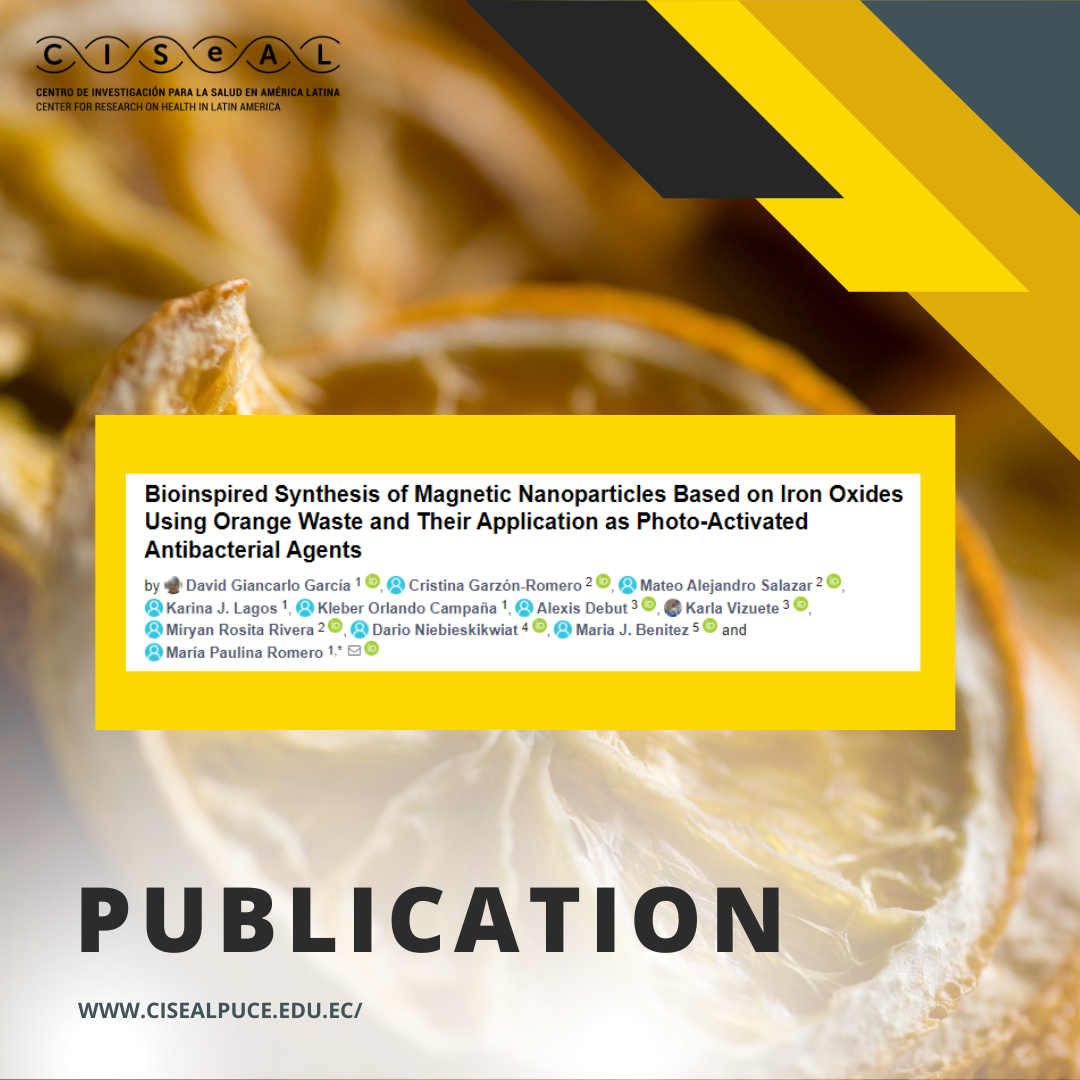
In the study carried out by our researcher Miryan Rivera, an ecological method was developed to manufacture magnetic nanoparticles based on iron oxides (MNPs-Fe), using orange waste. These nanoparticles, proposed as photothermal agents (PTAs) in antibacterial photothermal therapy (PTT), offer a promising solution to a widespread health challenge.
The study introduces a rapid and environmentally friendly green synthesis (GS) method to produce MNPs-Fe from orange waste. Orange peel extract, rich in organic compounds, serves as a multifunctional agent for reduction, capping, and stabilization in the GS process, which is accelerated by microwave (MW) irradiation.
The research extensively examined the weight, physical-chemical properties, and magnetic characteristics of the MNPs-Fe. Furthermore, cytotoxicity assessments were conducted on the ATCC RAW 264.7 animal cell line, along with antibacterial testing against Staphylococcus aureus and Escherichia coli.
The standout finding was the 50GS-MNPs-Fe sample, prepared with a blend of NH4OH and orange peel extract. This sample exhibited excellent mass yield, with nanoparticle sizes around 50 nm and the presence of an organic coating, possibly terpenes or aldehydes. Importantly, this coating was found to enhance cell viability during extended cell culture periods of up to 8 days at concentrations below 250 µg·mL−1. Although it didn't impact antibacterial activity, the plasmonic effect of 50GS-MNPs-Fe, induced by red light irradiation (630 nm, 65.5 mW·cm−2, 30 min), was credited for inhibiting bacteria.
A noteworthy characteristic of 50GS-MNPs-Fe was its superparamagnetism, remaining stable at temperatures over 60 K, a broader range than MNPs-Fe produced by other methods. Consequently, these 50GS-MNPs-Fe nanoparticles show promise as versatile PTAs for combating bacterial infections. Moreover, their potential applications extend to magnetic hyperthermia, magnetic resonance imaging, and oncological treatments, opening new horizons in the field of medicine and nanotechnology. This innovative approach underscores the value of utilizing natural waste resources for cutting-edge research and environmental sustainability.
We invite you to read the full article here: https://www.mdpi.com/1422-0067/24/5/4770



